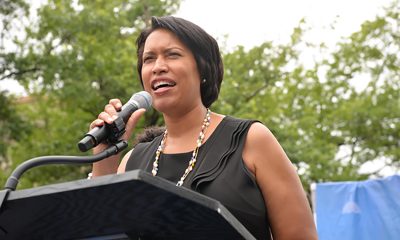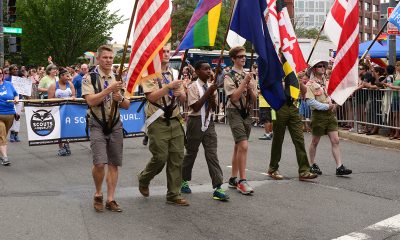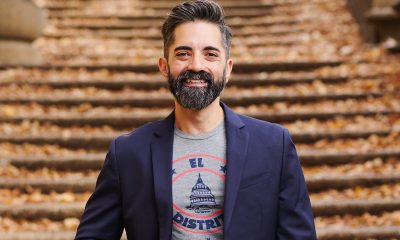Opinions
‘Queer’ evolves from hateful epithet to expression of pride
NYT criticizes HRC’s Robinson for use of term
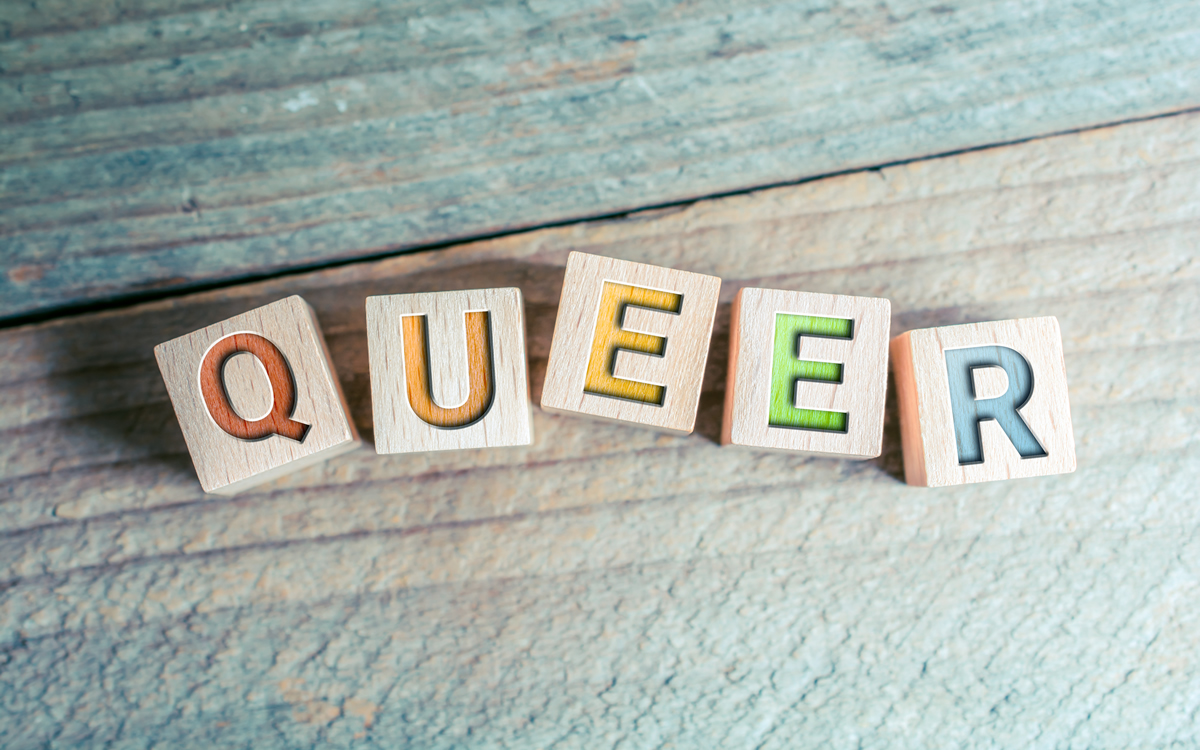
It hit me one morning this fall as I woke up: I’ve turned 70.
As I’ve been celebrating this milestone, I’ve marveled at the changes that have occurred for our LGBTQ community during my lifetime.
Marriage equality, Pete Buttigieg (or any LGBTQ person) running for president and/or the fab queer rom-com “Bros” would have been unimaginable when I began coming out 50 years ago.
Then, just three years after the Stonewall uprising, I and many other LGBTQ folk felt far more shame than pride about our queerness.
Most of us in that era wouldn’t have dreamed that, decades later, not only LGBTQ teens, but queer people our age would have marched, out and proud, in Pride parades. We’d never have thought that in the 21st century any of us would ever proudly say, shout or chant “we’re queer!”
Nothing is more emblematic to me of the progress made in LGBTQ rights from Stonewall to today than the evolution of the word “queer” from a hateful epithet to an expression of pride.
Today, the term “queer” can be found everywhere from news outlets (including NPR, the Blade, the New York Times and the Washington Post) to museum exhibits such as “Queering the Crip, Cripping the Queer” at the Schwules Museum Berlin through the end of January and “Queer Creativity Through the Ages: Artwork from the Center on Colfax Open Art Studio” at the Denver Art Museum through Dec. 31.
I can’t think of any of my under 60 friends, hetero or LGBTQ who don’t use the word “queer.” Sometimes they’re proudly writing it on Pride parade signs. Often, they use it as a neutral adjective. The way you’d say “they’re from Boston” or “he’s about six-feet tall.”
Many of my over-60 pals are beginning to use the word “queer.” If they’re not comfortable using it about themselves, they’re increasingly comfortable with others using it. My 70-something hetero cousins, who are LGBTQ allies, no longer feel I’m putting myself down when I say I’m queer.
Given that “queer” is so often used as an affirmation of identity or neutral descriptor, I was surprised when New York Times columnist Pamela Paul recently lamented the popularity of the “q-word.”
I’m an avid reader of Paul’s column. Paul, a former editor of the New York Times Book Review, is, like many writers, obsessed about language. She’s an astute observer of the culture and of how we use words.
Yet, I can’t help but wonder what Paul was thinking. “Language is always changing – but it shouldn’t become inflexible,” she wrote, “especially when new terminologies, in the name of inclusion, sometimes wind up making others feel excluded.”
Paul, who is hetero, worried that the widespread use of “queer” excludes LGBTQ people who don’t identify as queer. She was upset that so many Gen-Zers identify as queer, and annoyed that “gays and lesbians can feel crowded out” under the LGBTQ umbrella.
Paul chided new Human Rights Campaign president Kelley Robinson for using the word “queer,” and not saying the words “gay,” “lesbian” or “bisexual” in a video where she introduced herself.
People at HRC do say “gay,” “lesbian” “bisexual” “transgender” and “nonbinary,” Robinson wrote in response to Paul’s column in a letter to the Times.
“I identify as a Black queer woman,” Robinson wrote, “and when I say ‘queer,’ it’s to be as inclusive as possible, to re-center those at the margins, to embrace our differences and to embrace our power, too.”
Robinson nailed what attracts so many of us to the word “queer.”
Of course, many LGBTQ boomers and Gen-Xers vividly recall when “queer” was a homophobic slur.
A hetero friend remembers when she was seven riding on a school bus. “I was mad at a kid,” she told me, “I wanted to call him something mean. So I said he was ‘queer.’”
“My sister told me not to say that again,” my pal added, “She said it was too horrible to tell me what it meant.”
But in recent decades (starting with AIDS activists), we’ve reclaimed the word “queer.” We’ve taken away its sting: transformed it from a hate-mongering, othering slur to a source of power.
It’s hard to think of a more inclusive word than queer. It includes and values all LGBTQ folk. In the wake of the Colorado Springs LGBTQ club shooting, it’s more important than ever to be proudly queer.
Kathi Wolfe, a writer and a poet, is a regular contributor to the Blade.

I hope you have a great Thanksgiving and can enjoy it with family and friends and that you have things you can be thankful for this past year. That you have your health. Now here is the column I would have liked to share with you this Thanksgiving:
To all my friends and family. This year I am thankful the felon has left the White House. It feels we can all finally breath again. I am so happy his idea of a ballroom at the White House was a joke, and we can once again walk in Jackie Kennedy’s rose garden, and visit the beautiful East Wing. I am thankful the felon’s personal Goebbels, Stephen Miller, lost his job when the reality that he was a fascist was too much to take. It was wonderful to see the Supreme Court wake up and do their job once again. They stopped drinking the MAGA Kool-Aid and voided all the executive orders calling on museums to hide the history of Black Americans, women, and the LGBTQ community. They told the president he didn’t have the right to place tariffs, and that he couldn’t fire legally appointed members of commissions under the rubric of Congress’s control.
Then I am thankful the Congress began to do its job. That so many Republicans grew a set of balls and decided to challenge Speaker Mike ‘sycophant’ Johnson, reminding him they were an independent part of government, and didn’t need to rubber stamp everything the felon wanted. I was thankful to see them extend the SNAP program indefinitely, and the same with the tax credits for the ACA, agreeing to include these important programs in next year’s budget. Then they went further, and paid for the programs, by rescinding all the tax benefits they had given to the wealthy, and corporations, in the felon’s big ugly bill. Finally realizing it is the poor and middle class who they had to help if the country was to move forward. Then I can’t thank them enough for finally passing the Equality Act, and doing it with a veto proof majority, so the felon had to sign it, before he left office. They did the same for the Choice Act, and the Voting Rights Act. It was a glorious year with so much to be thankful for.
Then I am so thankful Congress finally stood up to the felon and said he couldn’t start wars without their approval, and the Supreme Court ruled they were right. That attacking Venezuela was not something he had the right to do. Then the final thing the court did this year I am thankful for, is they actually modified their ruling on presidential immunity, and said the felon’s grifting was not covered, as under their decision that was private, and not done in his role as president. Again, can’t thank them enough for waking up and doing that.
Then there is even more I am thankful for this year. It was so nice to see Tesla collapse, and Musk lose his trillion-dollar salary. The people finally woke up to him and insisted Congress mandate the satellite system he built, basically with money from the government, was actually owned by the government, and he could no longer control who can use it. It was determined he alone would not be able to tell Ukraine whether or not they can use it in their war defending against the Russian invasion. Then I am so thankful Congress went even further, and approved the funds needed by the Ukrainians for long-range missiles, and a missile defense system, accepting Ukraine was actually fighting a proxy war for the West, and Ukraine winning that war would help keep our own men and women off the battlefield.
And speaking of our military, I thank Congress for lifting the ban on transgender persons in the military, and honoring their service, along with the service of women, Black service members, all members of the LGBTQ community, and all minorities. It was fun to see Pete Hegseth being led out of the Pentagon, and being reminded he wasn’t the Secretary of War. There is no Department of War, it is still the Department of Defense, with congressional oversight. Again, so many things to be thankful for this past year. It seemed like my heart runneth over.
Then my alarm went off and I woke up from my big beautiful dream, only to realize I was still living in the Trumpian nightmare.
Peter Rosenstein is a longtime LGBTQ rights and Democratic Party activist.
Commentary
Elusive safety: what new global data reveals about gender, violence, and erasure
Movements against gender equality, lack of human rights data contributing factors.
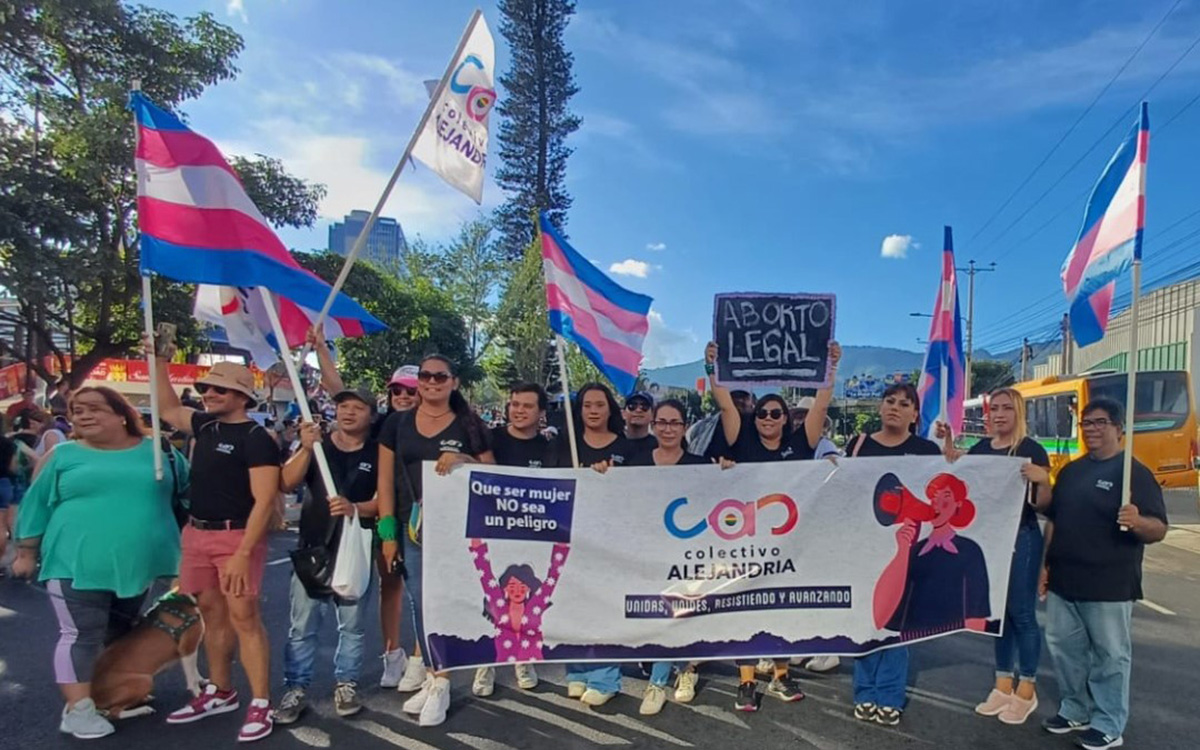
“My identity could be revealed, people can say whatever they want [online] without consequences. [Hormone replacement therapy] is illegal here so I’m just waiting to find a way to get out of here.”
-Anonymous respondent to the 2024 F&M Global Barometers LGBTQI+ Perception Index from Iraq, self-identified as a transgender woman and lesbian
As the campaign for 16 Days Against Gender-Based Violence begins, it is a reminder that gender-based violence (GBV) — both on– and offline — not only impacts women and girls but everyone who has been harmed or abused because of their gender or perceived gender. New research from the Franklin & Marshall (F&M) Global Barometers and its report A Growing Backlash: Quantifying the Experiences of LGBTQI+ People, 2022-2024 starkly show trends of declining safety among LGBTQI+ persons around the world.
This erosion of safety is accelerated by movements against gender equality and the disappearance of credible human rights data and reporting. The fight against GBV means understanding all people’s lived realities, including those of LGBTQI+ people, alongside the rights we continue to fight for.
We partnered together while at USAID and Franklin & Marshall College to expand the research and evidence base to better understand GBV against LGBTQI+ persons through the F&M Global Barometers. The collection of barometers tracks the legal rights and lived experiences of LGBTQI+ persons from 204 countries and territories from 2011 to the present. With more than a decade of data, it allows us to see how rights have progressed and receded as well as the gaps between legal protections and lived experiences of discrimination and violence.
This year’s data reveals alarming trends that highlight how fear and violence are, at its root, gendered phenomena that affect anyone who transgresses traditional gender norms.
LGBTQI+ people feel less safe
Nearly two-thirds of countries experienced a decline in their score on the F&M Global Barometers LGBTQI+ Perception Index (GBPI) from 2022-2024. This represents a five percent drop in global safety scores in just two years. With almost 70 percent of countries receiving an “F” grade on the GBPI, this suggests a global crisis in actual human rights protections for LGBTQI+ people.
Backsliding on LGBTQI+ human rights is happening everywhere, even in politically stable, established democracies with human rights protections for LGBTQI+ people. Countries in Western Europe and the Americas experienced the greatest negative GBPI score changes globally, 74 and 67 percent, respectively. Transgender people globally reported the highest likelihood of violence, while trans women and intersex people reported the highest levels of feeling very unsafe or unsafe simply because of who they are.
Taboo of gender equality
Before this current administration dismantled USAID, I helped create an LGBTQI+ inclusive whole-of-government strategy to prevent and respond to GBV that highlighted the unique forms of GBV against LGBTQI+ persons. This included so-called ‘corrective’ rape related to actual or perceived sexual orientation, gender identity, or expression” and so-called ‘conversion’ therapy practices that seek to change or suppress a person’s gender identity or expression, sexual orientation, or sex characteristics. These efforts helped connect the dots in understanding that LGBTQI+ violence is rooted in the same systems of inequality and power imbalances as the broader spectrum of GBV against women and girls.
Losing data and accountability
Data that helps better understand GBV against LGBTQI+ persons is also disappearing. Again, the dismantling of USAID meant a treasure trove of research and reports on LGBTQI+ rights have been lost. Earlier this year, the US Department of State removed LGBTQI+ reporting from its annual Human Rights Reports. These played a critical role in providing credible sources for civil society, researchers, and policymakers to track abuses and advocate for change.
If violence isn’t documented, it’s easier for governments to deny it even exists and harder for us to hold governments accountable. Yet when systems of accountability work, governments and civil society can utilize data in international forums like the UN Universal Periodic Review, the Convention on the Elimination of All Forms of Discrimination Against Women, and the Sustainable Development Goals to assess progress and compliance and call for governments to improve protections.
All may not be lost if other countries and donors fill the void by supporting independent data collection and reporting efforts like the F&M Global Barometers and other academic and civil society monitoring. Such efforts are essential to the fight against GBV: The data helps show that the path toward safety, equality, and justice is within our reach if we’re unafraid of truth and visibility of those most marginalized and impacted.
Jay Gilliam (he/him/his) was the Senior LGBTQI+ Coordinator at USAID and is a member of the Global Outreach Advisory Council of the F&M Global Barometers.
Susan Dicklitch-Nelson (she/her/hers) is the founder of the F&M Global Barometers and Professor of Government at Franklin & Marshall College.
Commentary
Second ‘lavender scare’ is harming our veterans. We know how to fix it
Out in National Security has built Trans Veterans State and Local Policy Toolkit
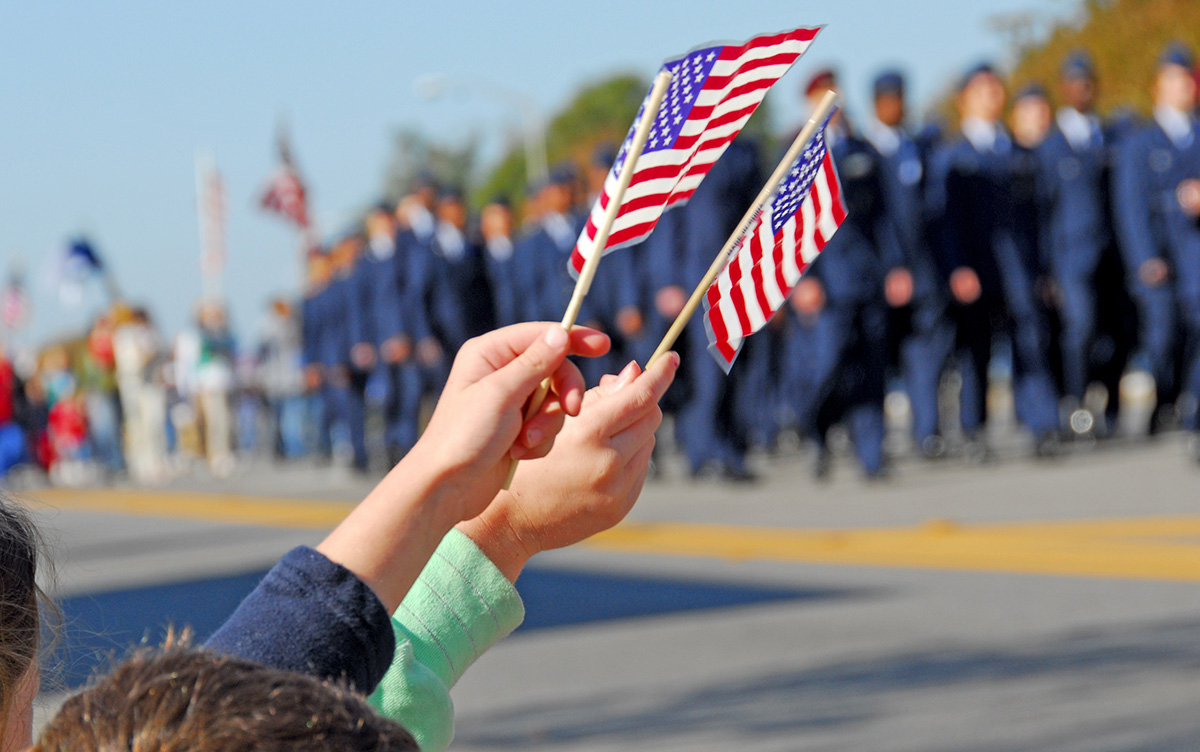
Seventy years after the first “lavender scare” drove LGBTQ Americans from public service, a second version is taking shape. Executive directives and administrative reviews have targeted transgender servicemembers and veterans, producing a new wave of quiet separations and lost benefits.
The policy language is technical, but the result is personal. Veterans who served honorably now face disrupted healthcare, delayed credentials, or housing barriers that no act of Congress ever required. Once again, Americans who met every standard of service are being told that their identity disqualifies them from stability.
Out in National Security built the Trans Veterans State and Local Policy Toolkit to change that. The toolkit gives state and local governments a practical path to repair harm through three measurable actions.
First, continuity of care. States can keep veterans covered by adopting presumptive Medicaid eligibility, aligning timelines with VA enrollment, and training providers in evidence-based gender-affirming care following the World Professional Association for Transgender Health Standards of Care Version 8.
Second, employment, and licensing. Governors and boards can recognize Department of Defense credentials, expedite licensing under existing reciprocity compacts, and ensure nondiscrimination in state veterans’ employment statutes.
Third, housing stability. States can designate transgender-veteran housing liaisons, expand voucher access, and enforce fair-housing protections that already exist in law.
Each step can be taken administratively within 90 days and requires no new federal legislation. The goal is straightforward: small, state-level reforms that yield rapid, measurable improvement in veterans’ daily lives.
The toolkit was introduced during a Veterans Week event hosted by the Center for American Progress, where federal and state leaders joined Out in National Security to highlight the first wave of state agencies adopting its recommendations. The discussion underscored how targeted, administrative reforms can strengthen veterans’ healthcare, employment, and housing outcomes without new legislation. Full materials and implementation resources are now available at outinnationalsecurity.org/public-policy/toolkit, developed in partnership with Minority Veterans of America, the Modern Military Association of America, SPARTA Pride, and the Human Rights Campaign.
These are technical fixes, but they carry moral weight. They reaffirm a basic democratic promise: service earns respect, not suspicion.
As a policy professional who has worked with veterans across the country, I see this moment as a test of civic integrity. The measure of a democracy is not only who it allows to serve but how it treats them afterward.
The second “lavender scare” will end when institutions at every level decide that inclusion is an obligation, not an exception. The toolkit offers a way to begin.
For more information or to access the toolkit once it is public, visit outinnationalsecurity.org/toolkit.
Lucas F. Schleusener is the CEO of Out in National Security.
-

 District of Columbia2 days ago
District of Columbia2 days agoBowser announces she will not seek fourth term as mayor
-

 U.S. Military/Pentagon2 days ago
U.S. Military/Pentagon2 days agoPentagon moves to break with Boy Scouts over LGBTQ and gender inclusion
-

 Drag3 days ago
Drag3 days agoPattie Gonia calls out Hegseth’s anti-LGBTQ policies — while doing better pull-ups
-

 District of Columbia3 days ago
District of Columbia3 days agoSecond gay candidate announces run for Ward 1 D.C. Council seat














